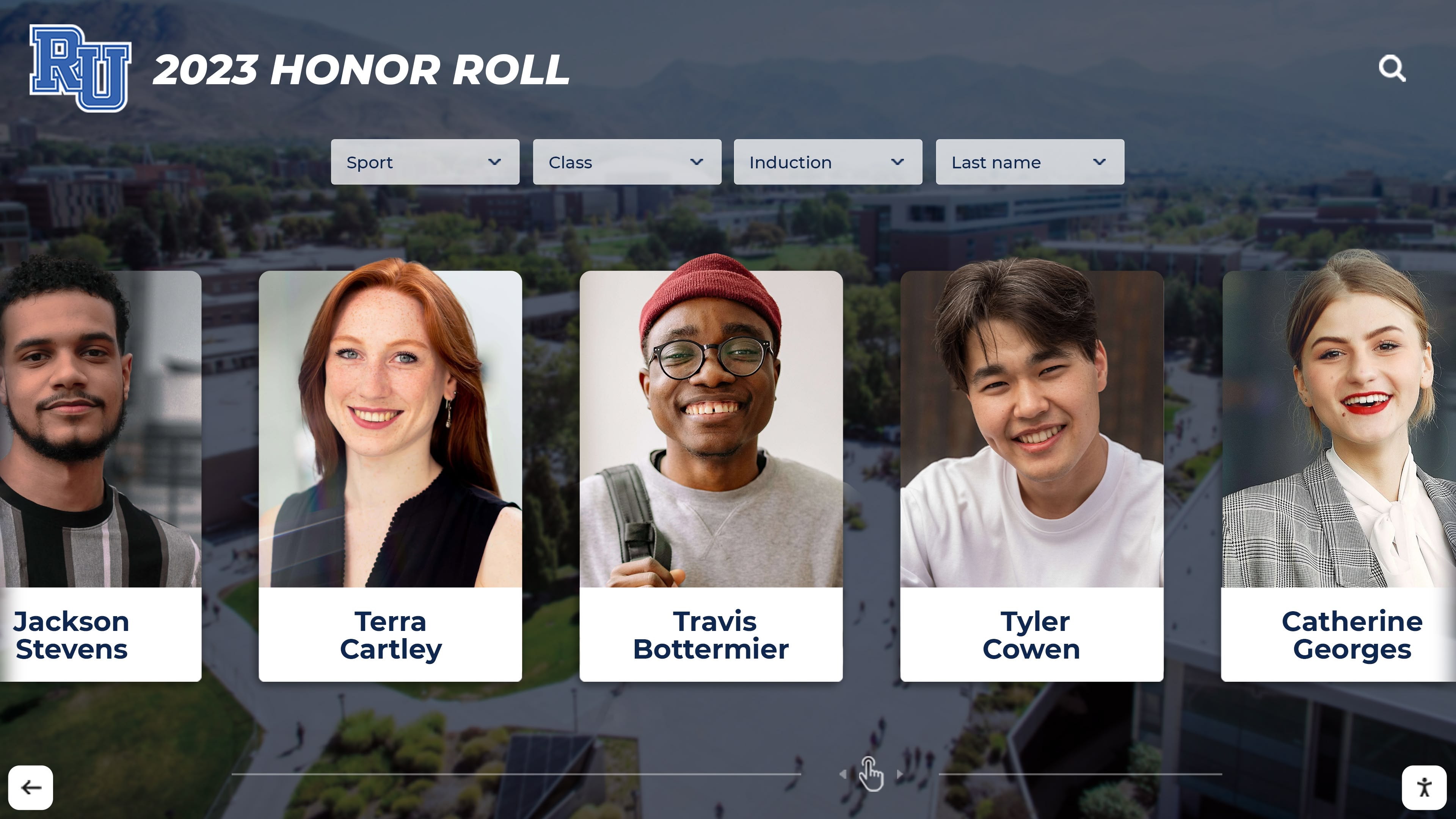Academic recognition represents one of education’s most powerful tools for motivating students, reinforcing institutional values, and building cultures where excellence flourishes. Yet many schools struggle with recognition programs that feel outdated, exclusive, or ineffective—celebrating the same small group of high achievers repeatedly while most students never experience meaningful acknowledgment. When implemented thoughtfully, modern academic recognition programs celebrate diverse forms of excellence, create achievable pathways for varied students, leverage engaging technology, and build lasting cultures that inspire sustained scholarly achievement.
This comprehensive guide examines every dimension of effective academic recognition, from establishing meaningful categories and transparent criteria to implementing interactive displays and measuring long-term program impact. Whether you’re an administrator planning recognition initiatives, a counselor seeking to motivate students, or an advancement professional strengthening school culture, this guide provides practical frameworks for creating recognition programs that genuinely inspire while honoring academic accomplishment appropriately.
Why Modern Academic Recognition Matters
Traditional academic recognition through paper certificates, brief assembly mentions, and outdated bulletin boards fails to engage contemporary students or create lasting motivational impact. Modern recognition programs leverage interactive technology, celebrate diverse achievement types, and create continuous engagement that extends far beyond single recognition ceremonies. Digital recognition solutions like Rocket Alumni Solutions provide comprehensive platforms specifically designed for educational institutions, enabling schools to honor unlimited achievements through engaging displays that inspire current students while preserving institutional academic legacy permanently.
The Academic Recognition Challenge in Today’s Schools
Walk through most school hallways and an uncomfortable reality becomes immediately apparent: athletic recognition dominates visible displays while academic achievements receive minimal permanent acknowledgment. Trophy cases overflow with decades of athletic accomplishments. Championship banners crowd gymnasiums. Yet academic excellence—representing education’s fundamental mission—often receives only fleeting recognition through temporary bulletin boards, brief announcements, or paper certificates filed away and forgotten.
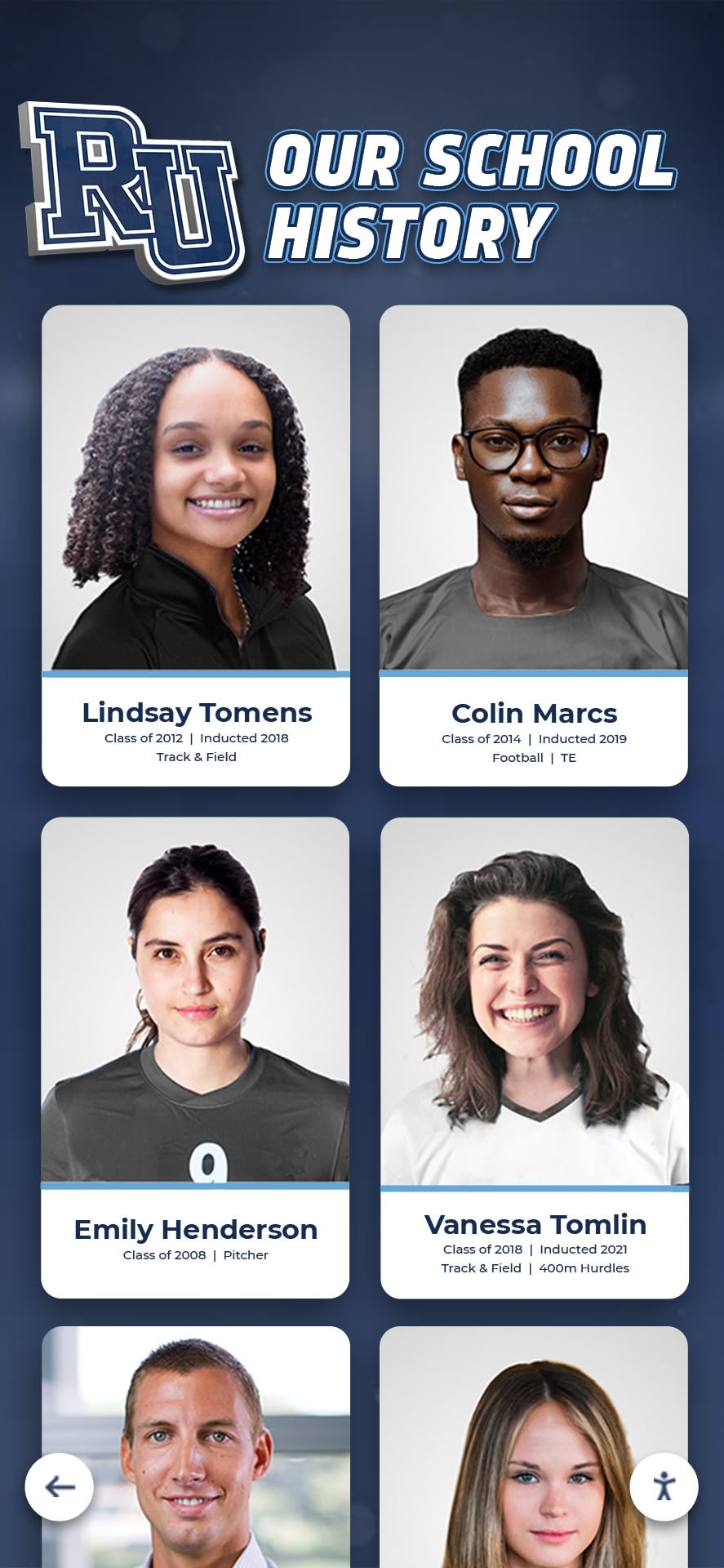
This recognition imbalance sends unintended but powerful messages about institutional values. When students observe prominent athletic celebration but minimal academic visibility, they naturally draw conclusions about which achievements truly matter to their schools and communities. This perception gap affects student motivation, effort allocation, and the fundamental culture schools create around learning and achievement.
Space Constraints Create Recognition Limitations
Traditional recognition approaches require physical space—wall areas for plaques, trophy cases for awards, bulletin boards for certificates. These space limitations force impossible choices about which achievements deserve permanent display and which must be stored away or discarded entirely. When recognition capacity remains finite, established traditions often win, meaning athletic programs with decades of display history maintain visibility while academic achievements struggle for any permanent acknowledgment.
Physical space constraints also create practical barriers to comprehensive recognition. A single honor roll list might include 200 students, yet traditional displays can only accommodate limited names. Scholarship winners, academic competition participants, National Merit finalists, Advanced Placement scholars, and subject-specific excellence all deserve recognition, but limited space forces schools to choose which accomplishments receive visibility and which go largely uncelebrated.
Modern digital recognition displays eliminate these space constraints entirely. A single 55-inch touchscreen can showcase comprehensive profiles for thousands of academic achievers—content requiring dozens of traditional displays to present. Unlimited digital capacity enables schools to recognize every worthy achievement without space-driven prioritization that undervalues academic excellence.
Traditional Methods Fail to Engage Digital-Native Students
Contemporary students grew up with smartphones, interactive tablets, and social media platforms delivering rich multimedia experiences. Recognition through static printed lists or unchanging bulletin boards feels outdated and disengaging compared to the interactive, visual experiences students encounter daily in their personal technology use.
Static recognition also becomes instantly outdated. Printed honor roll lists reflect only a single marking period, immediately obsolete when new grades post. Traditional displays rarely update, meaning current achievements often go unacknowledged for months until someone finds time to produce new plaques or update bulletin boards. This delayed recognition diminishes motivational impact when acknowledgment comes long after accomplishments occur.
Interactive digital platforms create engaging recognition experiences matching how students naturally interact with information technology. Touchscreen displays allow students to explore achievements, search for classmates, filter by category, and discover detailed stories behind accomplishments—transforming passive viewing into active exploration that generates genuine engagement.
Core Principles of Effective Academic Recognition Programs
Successful recognition programs share fundamental characteristics that distinguish truly motivational systems from token acknowledgment that generates minimal impact.
Recognition Must Balance Standards and Accessibility
Academic recognition faces inherent tension between maintaining meaningful standards requiring genuine effort and creating accessible pathways enabling diverse students to earn acknowledgment. Recognition requiring impossible standards that only identical top achievers can reach becomes discouraging rather than motivating for most students. Conversely, indiscriminate recognition lacking substantive standards devalues genuine accomplishment.
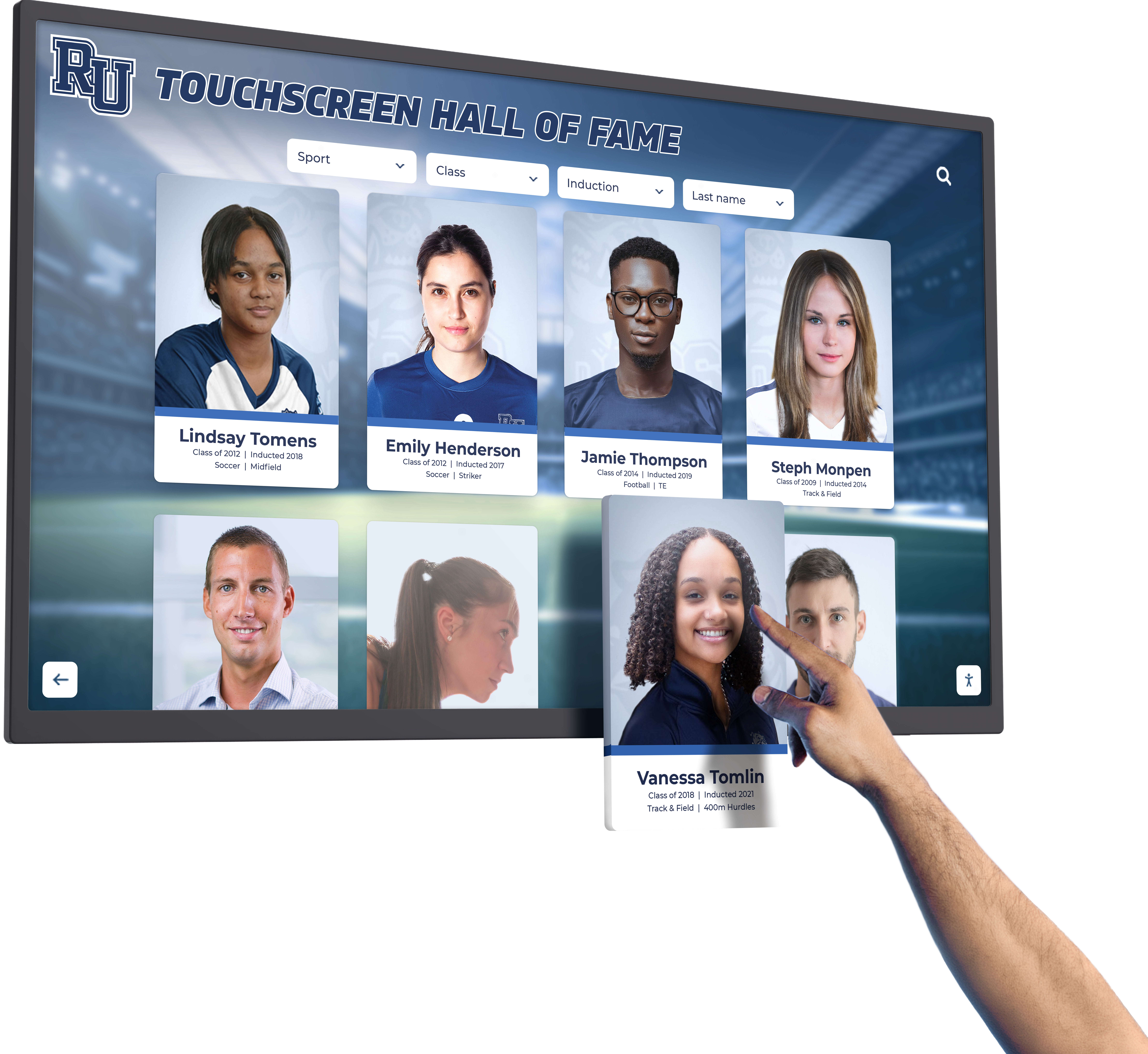
Effective programs establish clear, meaningful criteria while creating multiple recognition categories enabling varied students to experience acknowledgment through different forms of excellence. Honor roll recognition might include tiered levels—highest honors for exceptional GPAs, honors for strong performance, honorable mention for good achievement—ensuring recognition accessibility across ability levels while preserving distinctions acknowledging exceptional accomplishment.
Subject-specific awards, improvement recognition, competition achievements, and character-based acknowledgment all create diverse pathways ensuring students with varied strengths can experience meaningful recognition for genuine effort and accomplishment.
Celebrate Effort and Growth Alongside Absolute Achievement
Educational psychology research on growth mindset versus fixed mindset thinking reveals important implications for recognition design. Recognition emphasizing natural talent or innate ability paradoxically undermines motivation by suggesting success depends on gifts students cannot control. More effective recognition celebrates effort, strategies, persistence, improvement, and processes leading to achievement.
According to research from Stanford University’s Carol Dweck, students praised for effort rather than inherent intelligence demonstrate greater resilience, persistence, and willingness to tackle challenging academic work. Recognition programs should acknowledge not just highest absolute achievement but also significant growth, overcoming obstacles, sustained dedication, and improvement from baseline performance.
Improvement-focused recognition proves particularly meaningful for students who may never achieve top absolute performance but demonstrate remarkable development. A student raising their GPA from 2.0 to 3.2 through sustained effort deserves recognition equal to students maintaining 4.0 averages through less challenging circumstances.
Recognition Patterns Communicate True Institutional Values
Public recognition signals what schools genuinely value regardless of stated mission statements. When recognition consistently focuses only on academic test scores, GPA, or standardized achievements, schools communicate that nothing else matters comparably. When recognition celebrates diverse accomplishments across academics, character, improvement, competition, and effort, schools demonstrate that excellence takes many forms and various contributions to learning communities deserve acknowledgment.
Students pay far more attention to who receives recognition than to speeches about school values. Recognition patterns create powerful lessons about what adults truly consider important and what behaviors, characteristics, and accomplishments receive community validation and social recognition among peers.
Comprehensive recognition categories ensure varied students see themselves reflected in acknowledged achievements, creating inclusive cultures where diverse forms of excellence receive appropriate celebration. Programs that showcase student achievement comprehensively report stronger academic engagement across broader student populations compared to narrow recognition focusing on limited achievement types.
Comprehensive Academic Recognition Categories
Effective programs celebrate multiple dimensions of academic excellence rather than narrow definitions focusing exclusively on grades and test scores.
Honor Roll and Grade-Based Achievement
Traditional honor roll recognition remains foundational to academic programs, acknowledging students who achieve specified grade point averages demonstrating consistent strong performance across subject areas. Modern approaches enhance basic honor roll recognition through richer content and more engaging presentation.
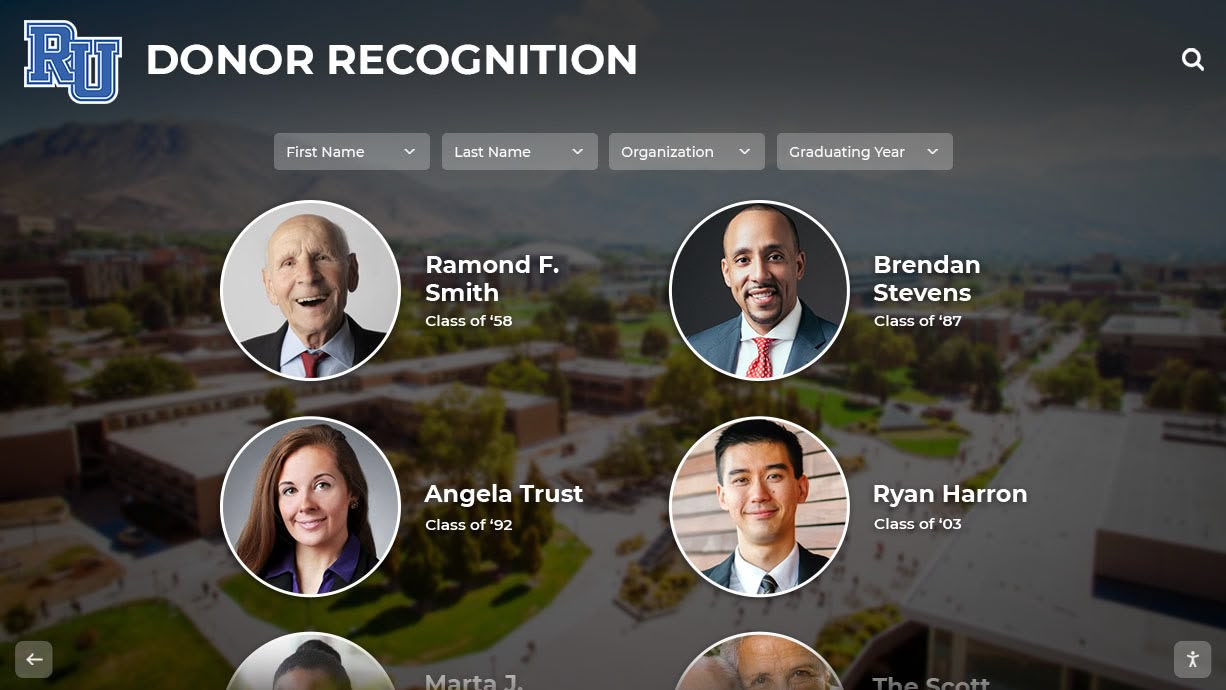
Enhanced Honor Roll Recognition Elements:
- High-resolution student photographs creating visual connection beyond simple name lists
- GPA statistics providing context about achievement level when privacy considerations allow sharing
- Brief student statements about academic goals, favorite subjects, or study strategies
- Teacher nominations highlighting specific academic strengths or notable improvements
- Historical honor roll participation showing sustained achievement across multiple terms
Digital platforms enable schools to update honor roll displays quarterly aligned with marking periods, ensuring recognition remains current and relevant. Unlike printed lists that become immediately outdated, interactive digital honor roll displays maintain ongoing accessibility while preserving complete honor roll history across school years for long-term institutional memory.
Tiered honor roll systems—highest honors, honors, honorable mention—create inclusive recognition acknowledging varied achievement levels rather than all-or-nothing approaches where students either make top recognition or receive nothing.
Academic Competition and Intellectual Challenge
Students excelling in academic competitions demonstrate applied scholarship, intellectual curiosity, and willingness to challenge themselves beyond classroom requirements. Competition success deserves prominent recognition celebrating both individual excellence and positive reflection on school academic programs.
Competition Recognition Categories:
- Science Fair Achievements: Regional, state, and national science fair awards acknowledging research capability and scientific inquiry
- Mathematics Competitions: Math league participation, AMC scores, MATHCOUNTS achievements, and other quantitative competition success
- Debate and Speech: Forensics tournament placements, debate championship performances, and speech competition excellence
- Academic Bowl and Quiz Bowl: Team and individual achievements in academic knowledge competitions
- Robotics and STEM Challenges: Engineering competition success, robotics tournament achievements, and technical challenge victories
- Writing Competitions: Essay contest awards, creative writing recognition, journalism honors, and literary achievement
- Language and Spelling: Foreign language achievement, spelling bee success, and linguistic excellence
Competition recognition should include comprehensive details about achievement significance—competition scope (local, state, national), placement specifics, research or performance descriptions, and team versus individual acknowledgment. Rich storytelling helps audiences understand what students accomplished and why achievements matter.
Advanced Coursework and Academic Challenge-Seeking
Students pursuing rigorous academic programs through Advanced Placement, International Baccalaureate, dual enrollment, or honors coursework demonstrate intellectual ambition and college-readiness deserving recognition. Acknowledging challenging coursework participation validates academic risk-taking behavior schools want to encourage.
Advanced Academic Recognition:
- AP Scholar Awards: College Board’s AP Scholar designations based on AP exam performance
- Individual AP Exam Achievement: Recognition for scores of 3, 4, or 5 on specific AP examinations
- IB Diploma Program: Acknowledgment of full IB Diploma pursuit and successful completion
- Dual Enrollment Success: Recognition for college coursework completed while still in high school
- Honors Program Participation: Acknowledgment of sustained honors course enrollment across school years
- Academic Distinction: Cumulative recognition for students maintaining rigorous course loads throughout high school
According to the College Board, students participating in AP programs demonstrate better college outcomes including higher graduation rates and stronger first-year college performance. Recognition for challenging coursework participation encourages broader student engagement with rigorous academic options that prepare students for collegiate success.
Scholarship Recognition and College Readiness
Academic scholarships represent tangible validation that scholarly excellence creates real opportunities and financial rewards. Scholarship recognition demonstrates to younger students that academic achievement matters beyond grades and school recognition—colleges and organizations provide substantial financial support for proven scholarly accomplishment.

Scholarship Recognition Elements:
- Student names and photographs creating personal connection to achievements
- Scholarship sponsoring organizations and award names
- Award amounts when appropriate and not privacy-sensitive
- Colleges or universities students will attend
- Intended majors or academic focus areas
- Academic achievement criteria that earned scholarships
- Brief statements about career goals or academic aspirations
Scholarship recognition proves particularly motivational for students from families with limited college financial resources. Visible examples of peers earning substantial scholarship support demonstrates that academic excellence creates genuine pathways to college access regardless of family financial circumstances.
Highlighting donor recognition and scholarship programs creates additional value by acknowledging community members and organizations whose generosity makes scholarship opportunities possible, potentially encouraging additional scholarship establishment.
National Honor Society and Academic Organizations
Selection to prestigious academic organizations validates sustained scholarly excellence, character, leadership, and service—comprehensive achievement beyond simple academic metrics. Honor society membership recognition acknowledges holistic student development that colleges and employers value.
Academic Organization Recognition:
- National Honor Society: The premier secondary school academic honor society requiring scholarship, leadership, service, and character
- Subject-Specific Honor Societies: National organizations for languages, mathematics, science, social studies, and other disciplines
- Phi Beta Kappa: For collegiate institutions, recognizing undergraduate liberal arts and sciences excellence
- Academic Honor Societies: School-specific organizations with established selection criteria and meaningful membership standards
- Leadership Positions: Recognition of students serving as officers or leaders within academic organizations
Recognition should include induction years, leadership positions held within organizations, notable service contributions, and ongoing participation demonstrating sustained commitment beyond initial membership selection.
Subject-Specific Academic Excellence
Department-level awards celebrating excellence in specific academic disciplines ensure diverse scholarly talents receive acknowledgment while validating that schools value achievement across entire curriculum rather than just certain subject areas.
Subject Area Recognition:
- Mathematics Excellence: Recognition for exceptional performance in algebra, geometry, calculus, statistics, and advanced mathematics
- Science Achievement: Awards for biology, chemistry, physics, environmental science, and integrated science excellence
- English and Literature: Recognition for writing ability, literary analysis, reading achievement, and communication skills
- Social Studies and History: Awards for historical knowledge, civic understanding, and social science achievement
- Foreign Languages: Recognition for linguistic achievement in Spanish, French, German, Chinese, and other world languages
- Fine Arts Academic Excellence: Awards for art history knowledge, music theory achievement, and arts integration scholarship
- Career and Technical Education: Recognition for excellence in business, technology, healthcare, engineering, and vocational programs
Subject-specific awards often come with teacher nominations explaining why students deserve recognition, providing rich contextual information about achievement quality, character demonstration, intellectual curiosity, or exceptional growth that simple grades don’t fully convey.
Improvement and Growth Recognition
Some of students’ most remarkable achievements involve significant growth and improvement rather than achieving highest absolute performance. Improvement recognition creates accessible pathways for students overcoming challenges, rebuilding from struggles, or developing capabilities from lower starting points.
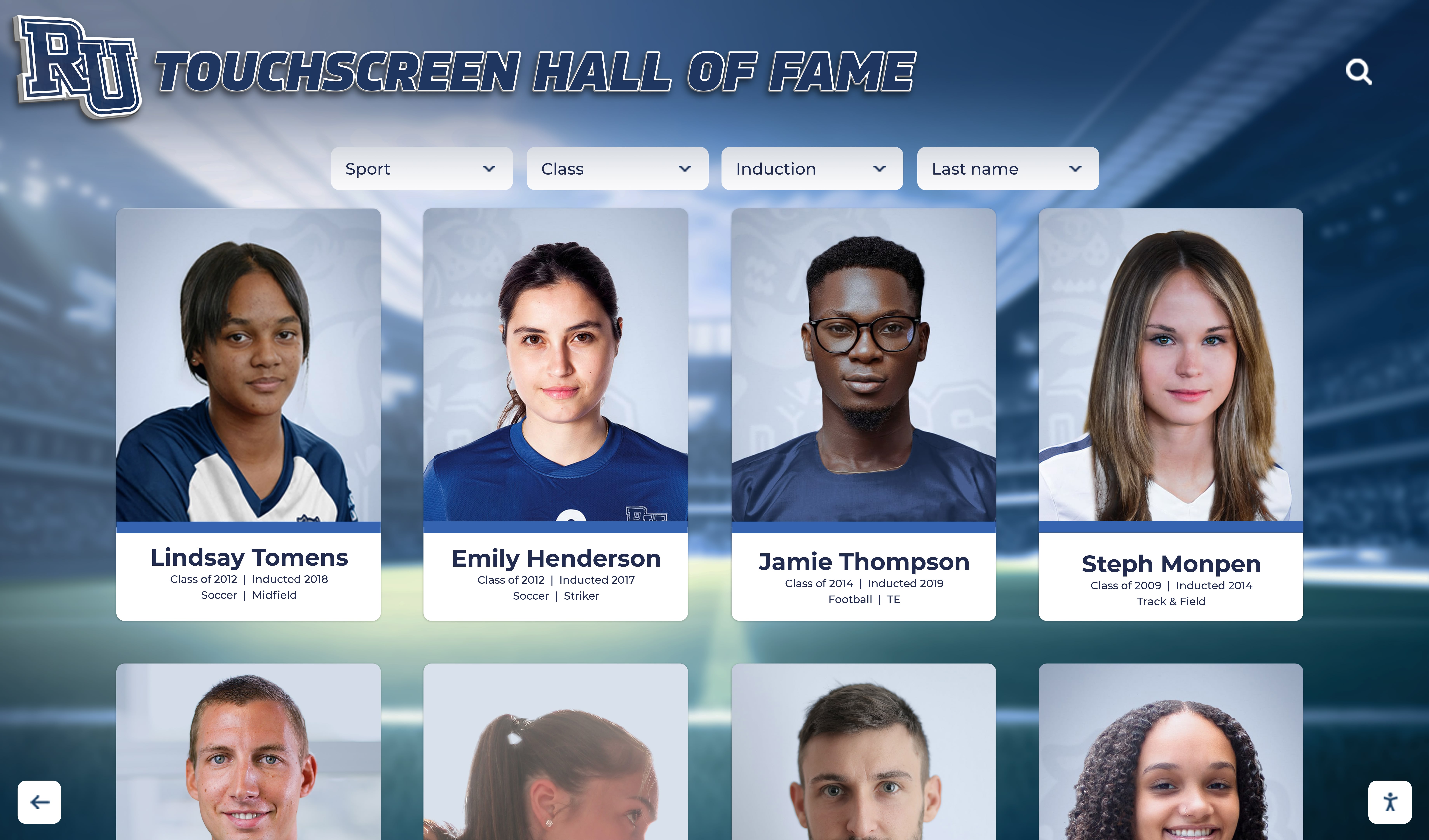
Growth-Based Recognition:
- Most Improved Student Awards: Department-level recognition for students demonstrating greatest improvement in specific subjects
- Academic Comeback Recognition: Acknowledgment for students who rebuilt academic standing after significant struggles or setbacks
- English Learner Academic Achievement: Recognition for academic success while developing English language proficiency
- Special Education Achievement: Acknowledgment for students meeting IEP goals and demonstrating academic growth relative to baseline
- Learning Disability Success: Recognition for students overcoming diagnosed learning challenges through sustained effort and growth
Improvement recognition requires baseline and endpoint measurements demonstrating genuine growth rather than simply acknowledging effort without measurable results. Combining quantitative improvement metrics with qualitative narratives about obstacles overcome creates powerful stories that inspire peers facing similar challenges.
Implementing Modern Academic Recognition Technology
Traditional recognition methods—printed certificates, static bulletin boards, physical plaques—create inherent limitations that modern technology eliminates while providing substantially enhanced engagement and accessibility.
Interactive Digital Recognition Displays
Touchscreen recognition displays transform how schools celebrate academic achievement by creating engaging, exploratory experiences that generate far higher engagement than static traditional displays. Interactive platforms allow students, families, and visitors to search for specific students, filter by achievement category, explore detailed accomplishment profiles, and discover connections to their own interests.
Key Digital Recognition Advantages:
- Unlimited Capacity: Digital platforms accommodate thousands of academic achievement profiles without physical space constraints limiting recognition scope
- Continuous Updates: New achievements can be added immediately without waiting for physical production timelines
- Rich Multimedia Content: High-resolution photos, detailed narratives, video content, and searchable databases impossible with traditional displays
- Universal Accessibility: Web-based platforms extend recognition access globally rather than limiting visibility to on-campus visitors
- Engagement Analytics: Digital systems track who engages with recognition, which achievements generate interest, and how visitors interact with content
- Social Sharing: Students can share their recognition through personal social networks, dramatically amplifying acknowledgment reach
- Historical Preservation: Complete academic achievement history remains accessible indefinitely rather than being replaced or stored away
Solutions like Rocket Alumni Solutions provide purpose-built recognition platforms designed specifically for educational institutions, combining physical touchscreen displays for high-visibility campus locations with web accessibility ensuring all students and families can explore achievements regardless of geographic location.
Strategic Display Placement for Maximum Impact
Recognition display location dramatically affects program impact and student engagement. Strategic placement decisions should consider traffic patterns, target audiences, and symbolic messaging about academic value.
High-Impact Placement Locations:
- Main School Entrances: Entry locations capture all daily student traffic, visitor attention, prospective family tours, and establish academic recognition as prominent institutional priority
- Library and Academic Commons: Natural locations where students already congregate for academic purposes, reinforcing learning culture
- Counseling Office Areas: Locations where students discuss academic planning, college preparation, and achievement goals with direct counselor reinforcement
- Cafeteria and Student Commons: High-traffic gathering spaces providing extended viewing time and casual exploration opportunities
- Administrative Reception Areas: Locations frequented by visitors, community members, and prospective families communicating institutional academic values
Multiple distributed displays throughout facilities often prove more effective than single concentrated installations, ensuring academic recognition maintains high visibility across entire campus rather than requiring deliberate visits to specific locations.
Web-Based Recognition Extending Global Access
Physical touchscreen displays serve on-campus audiences effectively, but web-based recognition platforms extend acknowledgment reach to families, alumni, college admissions representatives, scholarship committees, and global communities. Online accessibility proves particularly valuable for institutions with residential programs drawing students from diverse geographic regions or serving military families who move frequently.
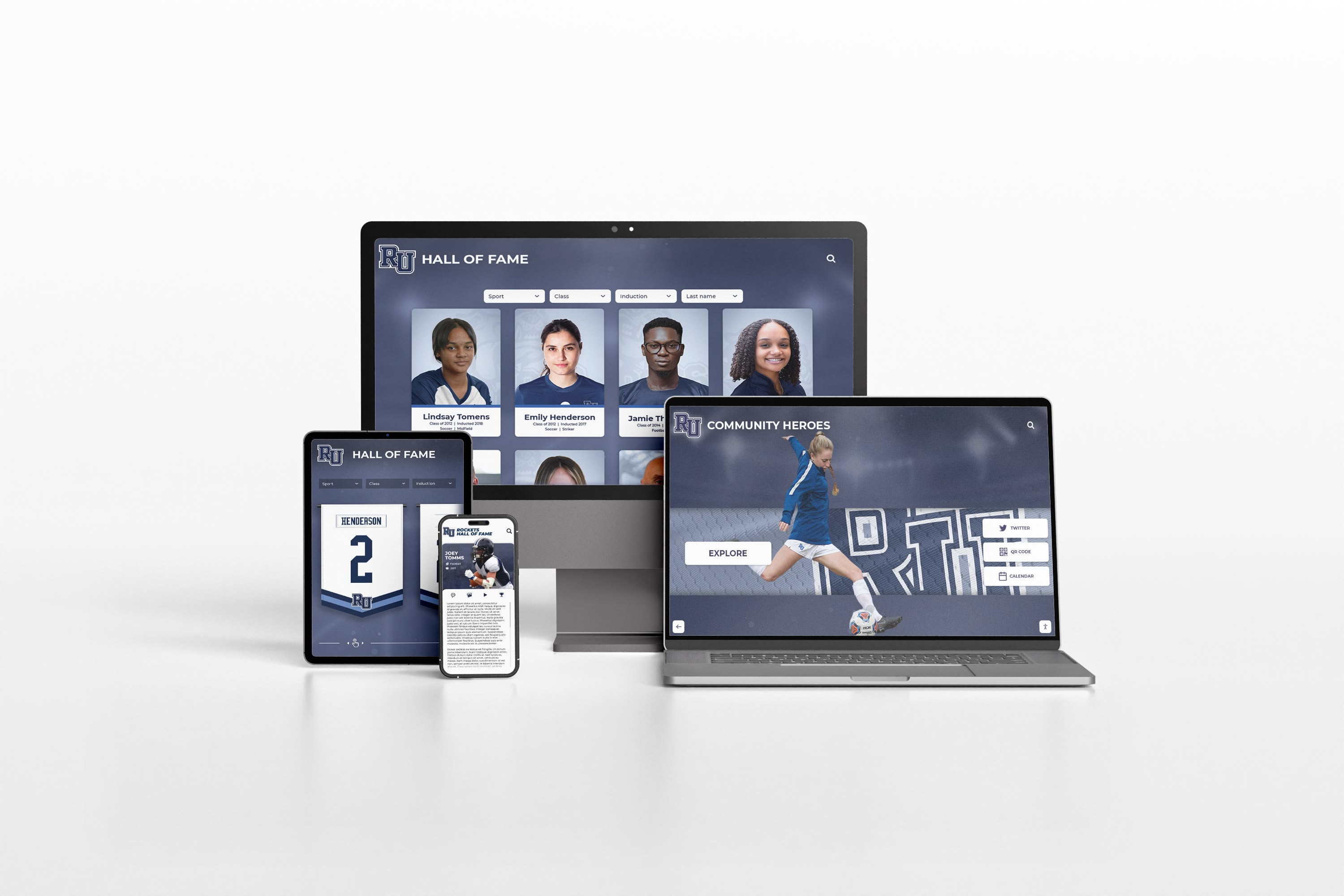
Web Platform Essential Features:
- Mobile Responsiveness: Recognition content must display effectively across smartphones, tablets, and desktop computers
- Powerful Search Capabilities: Name search, graduation year filtering, achievement category organization, keyword search across profiles
- Social Media Integration: One-click sharing to Facebook, LinkedIn, Twitter enabling students to distribute recognition through personal networks
- Permanent Accessibility: Complete recognition history remaining online indefinitely rather than disappearing after academic year ends
- Directory Integration: Connections to broader alumni directories, contact information when appropriate, and networking facilitation
- Update Notifications: Automated alerts when new recognition content gets added, encouraging repeat visits and sustained engagement
Best practices for digital boards showcasing photos and videos emphasize the importance of comprehensive multimedia content that brings academic achievements to life through visual storytelling rather than simple text lists.
Content Management for Non-Technical Staff
The most sophisticated recognition technology proves useless if school staff cannot easily manage content updates without IT department dependency. Purpose-built educational recognition platforms provide intuitive content management interfaces designed for counselors, registrars, and administrative staff rather than technical specialists.
User-Friendly Content Management Features:
- Template-Based Profile Creation: Pre-designed templates for common achievement types requiring only information filling rather than design knowledge
- Drag-and-Drop Media Upload: Simple image and video upload without complex file formatting requirements
- Preview Capabilities: See exactly how content will appear before publishing to avoid errors or formatting issues
- Workflow Approvals: Multi-step review processes ensuring quality control when appropriate
- Bulk Import Tools: Efficient methods for adding multiple students simultaneously rather than tedious individual profile creation
- Historical Archive Management: Organized systems for managing years of accumulated recognition content
- Role-Based Permissions: Appropriate access control allowing multiple staff members to contribute content securely
When content management feels intuitive and efficient, staff actually maintain recognition currency rather than allowing displays to become outdated due to update friction. According to CASE (Council for Advancement and Support of Education) research, technology usability represents the single most important factor determining whether educational recognition programs remain active or gradually decline.
Recognition Program Implementation Planning
Successful recognition initiatives require systematic planning addressing both technical implementation and cultural integration ensuring programs achieve intended impact and remain sustainable across leadership changes.
Assessment and Goal Definition
Begin implementation by conducting thorough assessment of current recognition approaches identifying strengths to preserve, limitations to address, and opportunities for enhancement.
Assessment Questions:
- What academic achievements currently receive recognition? Which go largely unacknowledged?
- How do current recognition methods compare to athletic or activity recognition visibility?
- What percentage of students receive some form of academic recognition annually?
- How do students, families, and teachers perceive current academic recognition adequacy?
- What physical space or budget constraints limit current recognition approaches?
- How quickly does recognition follow achievements? Do significant delays diminish motivational impact?
- What stakeholder groups should be involved in recognition program enhancement?
Clear goal establishment provides direction and success metrics for recognition initiatives. Goals might include recognizing 40% of students annually rather than current 15%, reducing recognition delay from current 4-month lag to within two weeks of achievement, implementing comprehensive scholarship recognition currently absent, or creating improvement categories acknowledging growth achievement.
Stakeholder Engagement and Committee Formation
Recognition programs affect multiple stakeholder groups who should participate in design, implementation, and ongoing management rather than treating recognition as purely administrative initiative imposed without input.
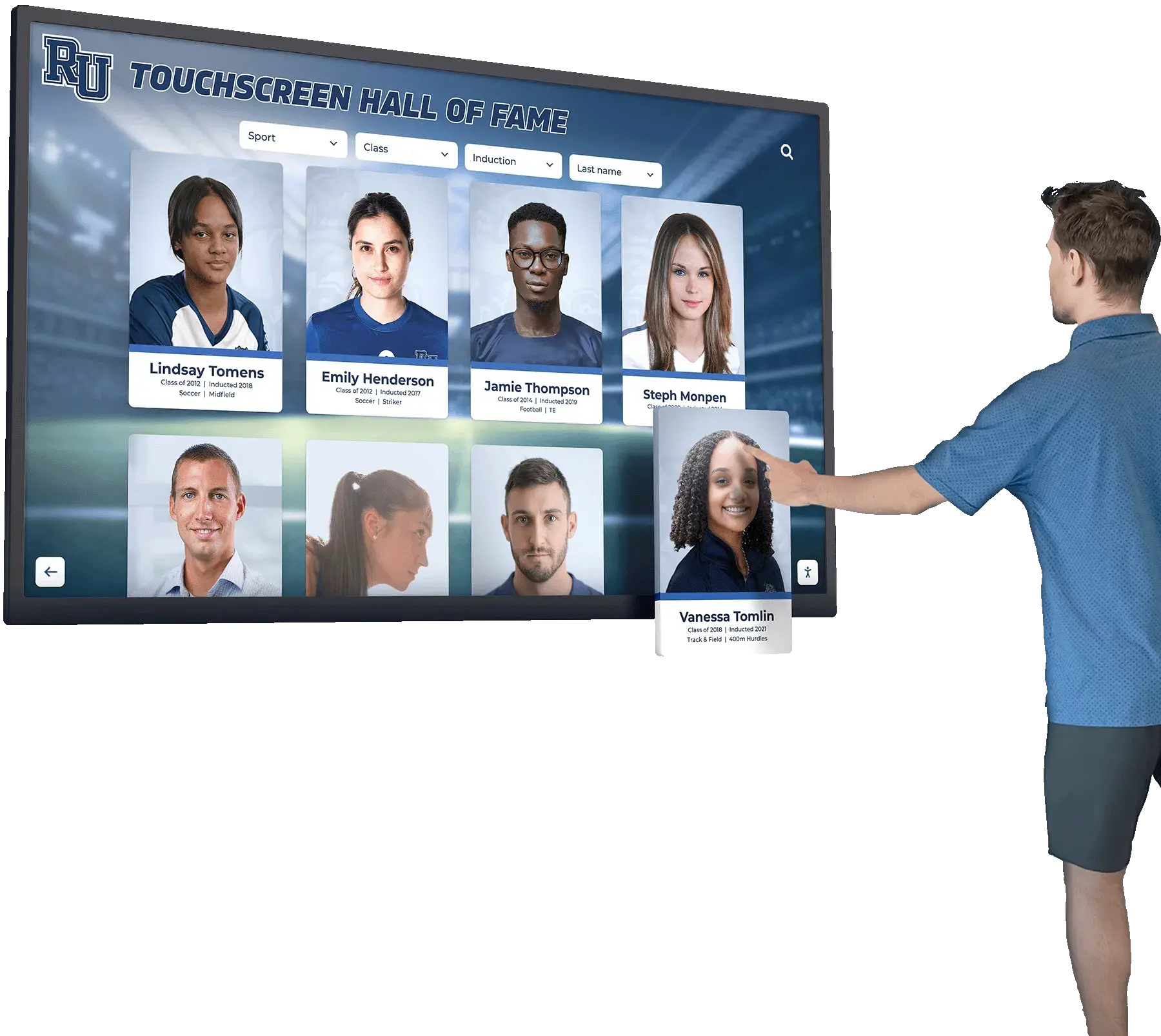
Key Stakeholder Representatives:
- School Administrators: Principal and assistant principals providing leadership support, resource allocation, and policy decisions
- Academic Counselors: Staff with direct knowledge of student achievement, GPA data, and counseling implications
- Department Chairs: Teachers representing diverse academic disciplines ensuring subject-specific recognition adequacy
- Registrar or Data Manager: Staff with access to academic records, honor roll lists, and achievement data
- Activities Coordinator: Perspective on current recognition approaches and comparison to athletic recognition
- Parent Representatives: Family perspective on recognition importance and communication preferences
- Student Representatives: Age-appropriate student input ensuring recognition feels meaningful from student perspective
Planning committees should meet regularly during implementation planning—typically 4-6 months—to establish categories, define criteria, review technology options, plan communication strategies, and develop sustainability plans ensuring programs continue effectively across personnel changes.
Technology Selection and Vendor Evaluation
Schools exploring digital recognition platforms should evaluate multiple options comparing features, costs, implementation support, and long-term vendor viability.
Critical Evaluation Criteria:
- Purpose-Built Educational Focus: Platforms designed specifically for schools versus generic digital signage requiring extensive customization
- Content Management Ease: Intuitive interfaces allowing non-technical staff independent operation without ongoing IT dependency
- Unlimited Content Capacity: Ability to accommodate comprehensive recognition without per-profile charges limiting recognition scope
- Multi-Device Accessibility: Recognition accessible through touchscreen displays, web browsers, and mobile devices
- Search and Discovery: Powerful search enabling visitors to find specific students, years, or achievement types efficiently
- Multimedia Support: Rich photo galleries, video integration, detailed narratives beyond simple text lists
- Analytics and Reporting: Comprehensive engagement data showing who interacts with recognition and how they explore content
- Integration Capabilities: Connections to student information systems, websites, and communication platforms
- Vendor Experience: Established track record with educational clients and long-term business stability
Request demonstrations from multiple providers, check references from similar institutions, and when possible conduct pilot implementations before full-scale deployment. Resources on content planning for digital halls of fame provide detailed frameworks for evaluating recognition system capabilities and planning comprehensive content strategies.
Content Development and Historical Research
Comprehensive recognition requires systematic content creation gathering both current achievements and historical academic excellence deserving permanent acknowledgment.
Current Achievement Workflows:
Establish regular processes for capturing ongoing academic recognition through standardized forms collecting achievement details, student information, relevant statistics, supporting photos, and teacher nominations. Align collection with natural school cycles—quarterly for honor roll, annually for year-end awards, immediately for competition achievements and scholarships.
Designate specific staff responsible for content gathering across different achievement categories: counselors for honor roll and GPA-based recognition, activities coordinators for academic competitions, college counselors for scholarship acknowledgment, department chairs for subject-specific awards.
Historical Content Development:
Many schools possess decades of academic achievement history requiring research and documentation to preserve institutional academic legacy. Systematically review yearbooks, old newsletters, school newspapers, award ceremony programs, and existing files documenting past academic honors.
Historical research often takes substantially longer than anticipated—plan accordingly and consider engaging student workers, parent volunteers, or professional digitization services for substantial historical projects. Comprehensive guides to creating alumni halls of fame provide detailed frameworks for systematic historical content development.
Training and Sustainability Planning
Programs require comprehensive training ensuring staff confidently manage ongoing recognition content without frustration or technical challenges undermining sustainability.
Training Program Elements:
- Complete platform feature overview showing all content management capabilities
- Step-by-step profile creation with hands-on practice using real achievement examples
- Photo optimization guidance ensuring visual quality and appropriate file sizes
- Search and organizational tool training for categorizing and tagging content effectively
- Troubleshooting common issues and accessing vendor technical support when needed
- Best practices for engaging recognition content creation beyond simple data entry
Create detailed documentation including written guides, video tutorials, and quick reference materials supporting ongoing operation. Ensure multiple staff members understand system operation preventing program disruption during personnel absences, vacations, or position changes.
Define clear update schedules preventing recognition delays that diminish motivational impact: quarterly honor roll updates, weekly addition of new achievements during school year, annual comprehensive reviews adding year-end awards and ensuring content accuracy.
Measuring Recognition Program Success
Systematic assessment demonstrates program effectiveness while identifying improvement opportunities ensuring recognition initiatives achieve intended goals and justify resource investment.
Quantitative Engagement Metrics
Digital recognition platforms provide comprehensive analytics revealing how students, families, and visitors engage with academic recognition content.
Key Performance Indicators:
- Total Unique Visitors: Individual users accessing recognition displays or web platforms
- Visit Frequency: Percentage of return visitors versus one-time views indicating sustained engagement
- Session Duration: Average time spent exploring recognition content per visit
- Search Behavior: Most common search terms, filters used, and discovery patterns
- Content Engagement: Which achievement categories, time periods, or individual profiles generate greatest interest
- Social Sharing: Frequency of recognition content shared through social media networks
- Device Distribution: Desktop versus mobile access patterns informing optimization priorities
Baseline measurements following initial implementation establish benchmarks for tracking engagement trends over time. Quarterly reviews identify successful content types, underutilized features requiring optimization, and changing engagement patterns suggesting refinements.
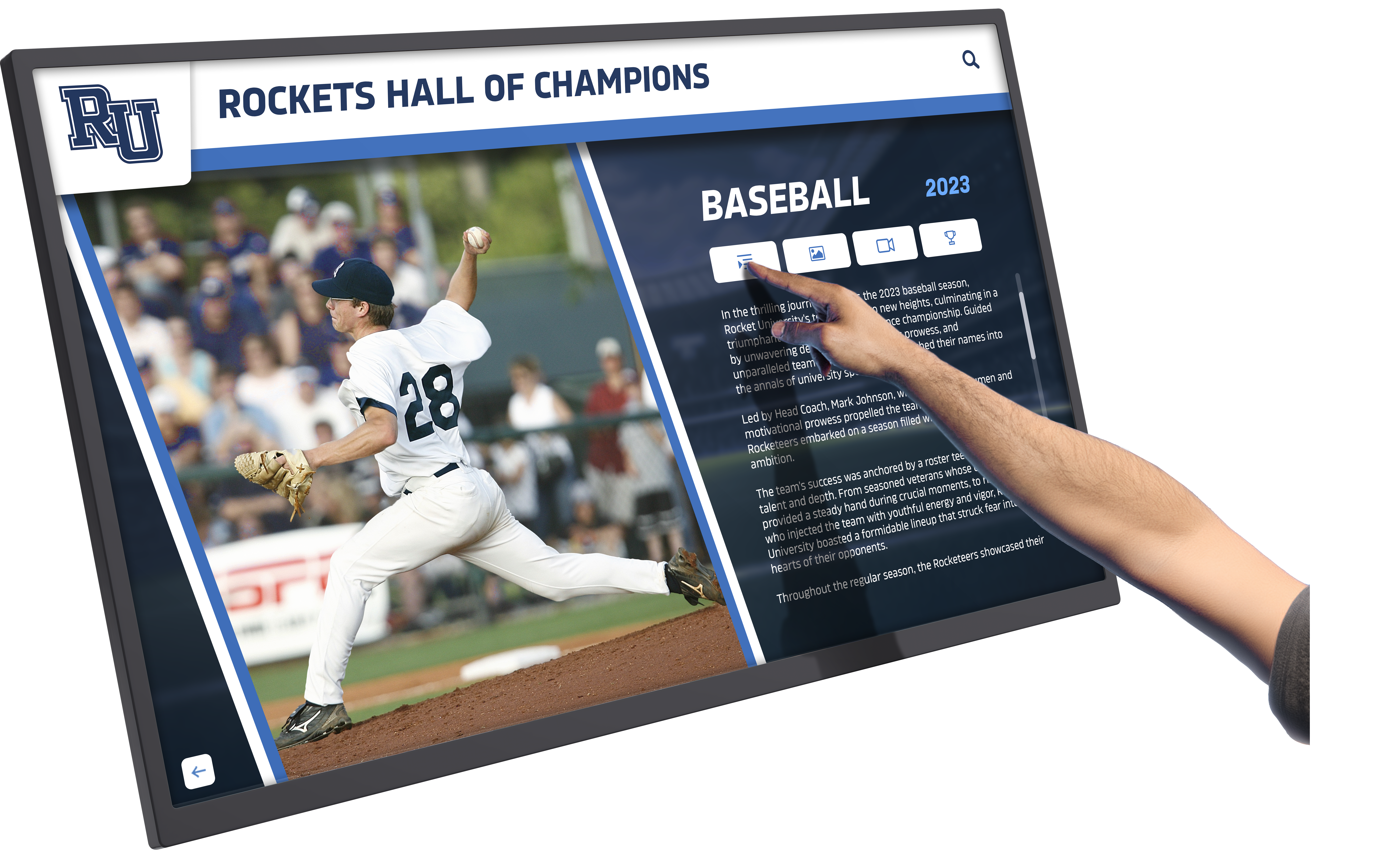
Qualitative Impact Assessment
Beyond quantitative metrics, gather qualitative feedback revealing recognition program influence on school culture, student motivation, and stakeholder satisfaction.
Qualitative Evaluation Methods:
- Student Focus Groups: Structured discussions exploring whether students notice recognition, perceive it as fair and meaningful, feel motivated by acknowledgment, and believe diverse achievement receives appropriate celebration
- Parent Surveys: Family perspectives on recognition visibility, communication quality, ceremony meaningfulness, and perceived impact on student motivation
- Teacher Observations: Educator feedback about student discussion of recognition, apparent motivational effects, changes in achievement-seeking behavior, and academic culture evolution
- College Counselor Input: Perspectives on whether recognition aids college application processes, impresses visiting admissions representatives, or strengthens institutional academic reputation
- Alumni Reflections: Graduates’ retrospective assessment of what recognition meant to them and how it influenced their academic engagement
Regular feedback collection—annually for comprehensive surveys, quarterly for brief pulse checks—ensures programs remain responsive to stakeholder needs and perceptions rather than operating based on administrative assumptions that may not match user experiences.
Academic Outcome Correlation
While direct causation proves difficult to establish definitively, monitor whether academic performance indicators show improvement following enhanced recognition implementation, potentially reflecting program motivational impact.
Academic Performance Indicators:
- Honor Roll Participation Rates: Percentage of students achieving honor roll status over time
- Rigorous Coursework Enrollment: AP, IB, honors, and dual enrollment participation trends
- Academic Competition Engagement: Number of students participating in science fairs, math leagues, debate tournaments, and other competitions
- Scholarship Achievement: Total scholarship dollars earned by graduating classes
- Academic Awards Distribution: Breadth of students receiving various forms of academic recognition
- Grade Distribution Trends: Overall academic performance patterns across student populations
According to research published in the Journal of Educational Psychology, schools implementing comprehensive recognition programs show statistically significant increases in achievement-oriented behaviors and academic engagement, though multiple factors beyond recognition influence these outcomes. Careful analysis examining correlations while acknowledging confounding variables provides reasonable program impact assessment.
Overcoming Common Recognition Program Challenges
Even well-designed recognition initiatives encounter predictable obstacles. Proactive strategies address these challenges effectively before they undermine program success.
Challenge: Recognition Feels Exclusive Rather Than Motivating
When identical students receive multiple awards year after year while most students never experience recognition, programs can inadvertently discourage broader student populations who perceive awards as impossible to achieve.
Solutions:
- Create multiple diverse recognition categories across achievement types, enabling varied students to experience acknowledgment through different excellence forms
- Implement tiered recognition systems (highest honors, honors, honorable mention) acknowledging different achievement levels
- Add improvement and growth categories explicitly accessible to students at various starting points
- Establish limits on total awards individual students can receive in specific categories, distributing recognition more broadly
- Monitor distribution patterns regularly identifying overrepresentation and proactively creating categories addressing gaps
Challenge: Recognition Currency and Update Timeliness
Recognition that appears months after achievements occur loses motivational impact. Delays also create outdated displays undermining program credibility and perceived importance.
Solutions:
Digital platforms enable near-real-time recognition updates impossible with traditional physical production requiring weeks or months. Establish clear workflows for immediate achievement notification, streamlined approval processes minimizing bureaucratic delays, designated staff responsibility with protected time for content management, and automated reminders ensuring updates occur on predictable schedules.
According to the National Association of Secondary School Principals, recognition delivered within two weeks of achievement generates substantially stronger motivational impact than identical acknowledgment delayed by months—immediacy signals that institutions actively notice and value accomplishments.
Challenge: Privacy Concerns and Family Preferences
Some families have legitimate concerns about public recognition of student achievements, particularly in online formats potentially accessible globally. Balancing recognition benefits against privacy considerations requires thoughtful approaches.
Solutions:
- Treat academic recognition similarly to yearbooks and athletic programs where students have reduced privacy expectations for achievement acknowledgment
- Provide opt-out mechanisms for families strongly preferring privacy while maintaining opt-out as exception rather than requiring opt-in
- Limit personally identifiable information beyond names and achievement details, avoiding addresses or sensitive personal data
- Secure appropriate permissions through annual photo release forms covering recognition display usage
- Clearly communicate privacy policies to families explaining what information gets shared and how families can manage privacy preferences
Federal regulations like FERPA (Family Educational Rights and Privacy Act) allow schools to publicly disclose “directory information” including honors and awards without prior consent, though districts should establish clear policies addressing digital recognition specific considerations.
Challenge: Maintaining Program Sustainability
Recognition programs sometimes launch with enthusiasm but gradually decline due to staff turnover, competing priorities, or update burden becoming overwhelming for busy educators.
Solutions:
Designate specific staff positions with formal responsibility for recognition content management rather than treating it as additional duty for already-overwhelmed teachers. Provide dedicated time allocation and clear performance expectations ensuring recognition receives appropriate priority.
Choose user-friendly technology platforms dramatically reducing management burden through intuitive interfaces, template systems, bulk import tools, and workflow automation. When content updates feel quick and straightforward, staff actually maintain currency rather than allowing displays to become outdated.
Create detailed documentation and cross-train multiple staff members preventing single-person dependency that disrupts programs when individuals leave positions or take extended absences. Comprehensive operational guides enable continuity across personnel transitions.
Future Trends in Academic Recognition
Understanding emerging trends helps schools make forward-looking recognition investments remaining effective and relevant for decades.
Competency-Based Recognition
As education evolves toward competency-based models emphasizing mastery demonstration over seat time, recognition systems will increasingly acknowledge specific competency attainment—critical thinking, research methodology, quantitative reasoning, written communication, collaborative problem-solving—beyond traditional subject-based grades.
Competency recognition provides more meaningful achievement signals to colleges and employers compared to GPA alone, communicating what students can actually do rather than just abstract grade averages. Digital platforms enable comprehensive competency tracking and display across diverse learning experiences creating holistic capability profiles.
Integration with Digital Credentials and Micro-Credentials
Educational institutions increasingly implement comprehensive digital credential systems where students accumulate verifiable achievement records across school years creating portable portfolios documenting accomplishments. These systems connect K-12 recognition to college applications and employment by providing standardized, verifiable achievement documentation that admissions officers and employers can authenticate easily.
Recognition platforms will integrate with blockchain-verified credential systems creating permanent, tamper-proof achievement records students can share throughout their lives. According to research from the Lumina Foundation, comprehensive digital credential ecosystems will transform how achievement gets documented, verified, and communicated across educational and career transitions.
Artificial Intelligence Content Enhancement
AI capabilities will transform recognition experiences through natural language generation creating engaging achievement narratives from statistical data, intelligent personalization adapting content based on viewer interests and exploration patterns, automated image enhancement ensuring professional visual quality, and predictive analytics suggesting recognition categories or criteria refinements based on engagement patterns and achievement trends.
AI-powered search will enable conversational queries—“Show me science competition winners from the last five years who attended Ivy League colleges”—rather than requiring structured database filters, making recognition exploration more intuitive and powerful.
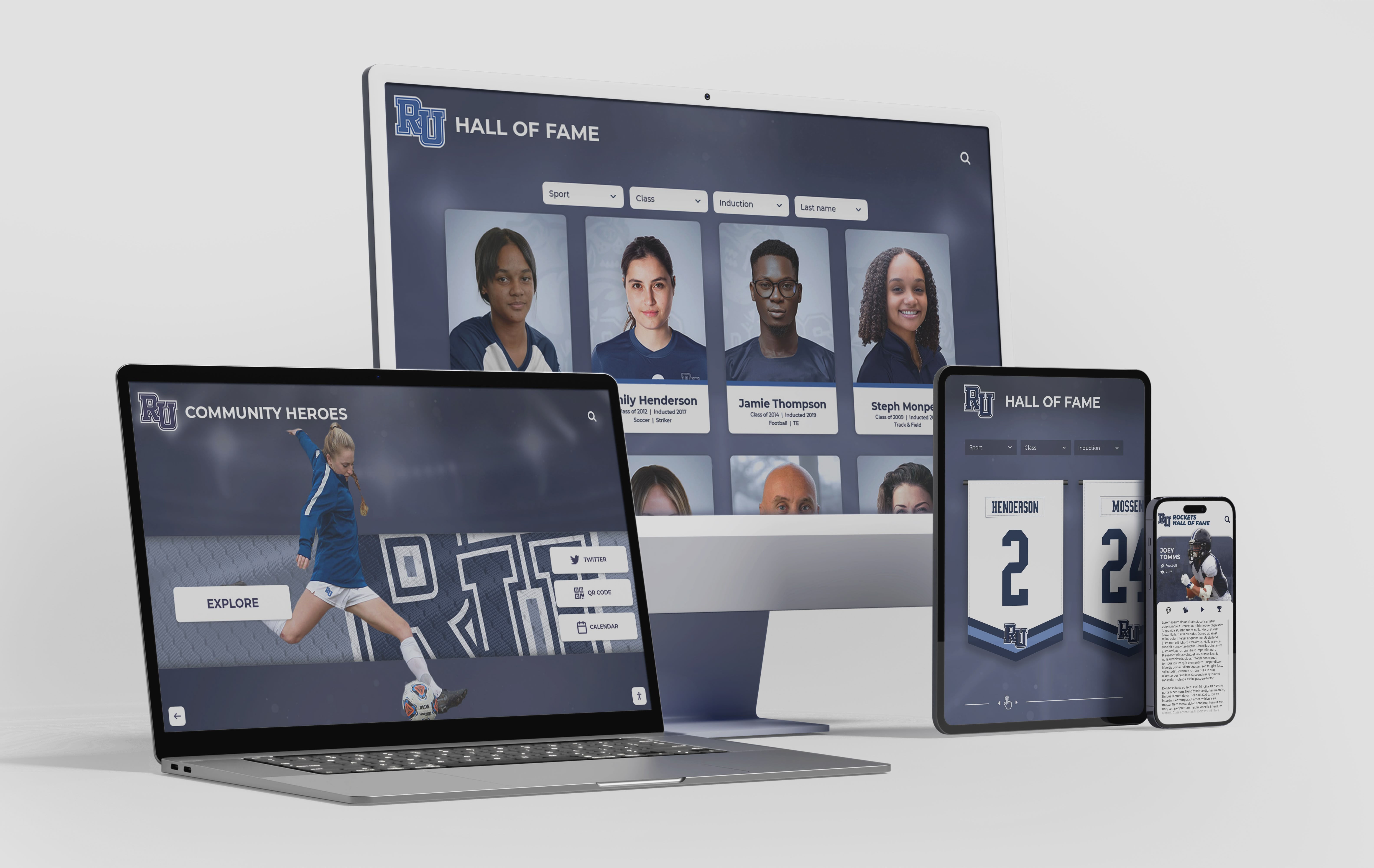
Creating Recognition Programs That Inspire Excellence
Effective academic recognition programs share fundamental characteristics distinguishing truly motivational systems from token acknowledgment generating minimal impact: comprehensive categories celebrating diverse achievement types beyond narrow definitions, clear transparent criteria applied consistently ensuring fairness perceptions, engaging presentation formats resonating with contemporary students and families, meaningful preservation through modern platforms ensuring lasting impact, authentic acknowledgment with specific accomplishment details rather than generic praise, inclusive approaches ensuring all students see realistic pathways to recognition, strong connections to school values and educational missions, active family and community engagement in celebrations, continuous improvement based on evidence and feedback, and sustained institutional commitment across leadership changes.
When schools invest in comprehensive recognition programs thoughtfully designed and effectively implemented, the dividends prove substantial: enhanced student motivation and achievement-seeking behavior, improved school climate and culture of excellence, increased family engagement and institutional pride, stronger academic reputation attracting prospective students, greater alumni connection to academic traditions, and most importantly students developing positive academic identities understanding their intellectual growth matters to caring adults and supportive communities.
Ready to transform how your school celebrates academic excellence? Solutions like Rocket Alumni Solutions provide purpose-built recognition platforms designed specifically for educational institutions, offering intuitive content management, engaging interactive displays, unlimited capacity for comprehensive recognition, proven approaches helping schools build excellence cultures, and ongoing support ensuring successful implementation and sustained program success.
Your students achieve remarkable scholarly accomplishments daily across honor roll achievement, academic competitions, challenging coursework, character development, and intellectual growth. Modern recognition programs ensure these achievements receive the celebration that inspires continued excellence, honors diverse talents, validates effort and persistence, creates lasting institutional pride, and builds school communities where all students feel valued for their academic contributions and motivated to pursue their highest intellectual potential.
Academic recognition represents far more than certificates and assemblies—it’s a fundamental tool for shaping school culture, motivating student achievement, and communicating institutional values. When recognition celebrates diverse excellence, employs engaging technology, maintains meaningful standards while creating accessible pathways, and operates sustainably across time, schools create environments where learning flourishes and every student’s academic journey receives the acknowledgment it deserves.
